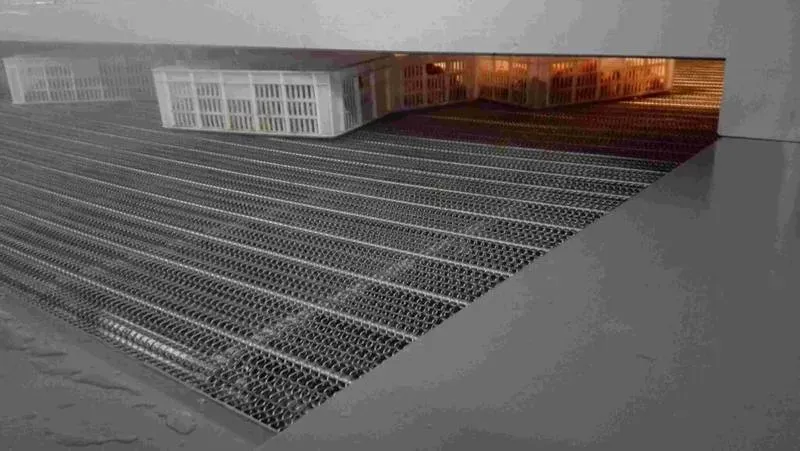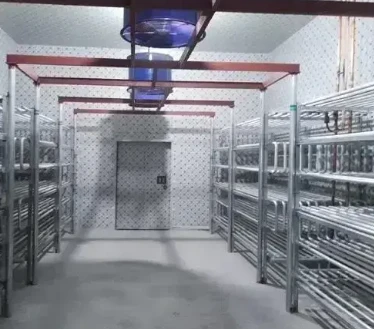Designing an Efficient New Walk-In Freezer for Optimal Storage Solutions
Understanding New Walk-In Freezers A Comprehensive Guide
In today's fast-paced food industry, maintaining the freshness and quality of perishable goods is more crucial than ever. One of the most efficient ways to accomplish this is through the use of walk-in freezers. The introduction of new walk-in freezer technology has transformed how businesses store frozen food, offering numerous features and benefits that enhance operational efficiency. This article explores the significance of walk-in freezers, the technological advancements in newer models, and considerations for businesses looking to invest in one.
What is a Walk-In Freezer?
A walk-in freezer is a large refrigerated space designed for the storage of frozen goods. Typically, these freezers can range in size from small commercial units to large warehouses, capable of holding thousands of pounds of perishable inventory. They are usually built with insulated walls and equipped with powerful refrigeration systems to maintain a consistently low temperature.
Importance of Walk-In Freezers
For industries such as food service, pharmaceutical, and logistics, walk-in freezers play a vital role in the preservation of products. They ensure that food items, vaccines, and other sensitive materials remain frozen, thus preventing spoilage and maintaining quality. This is particularly significant for restaurants, grocery stores, and wholesalers where inventory management directly impacts customer satisfaction and business profitability.
Advancements in Walk-In Freezer Technology
The latest models of walk-in freezers boast several advancements that enhance their efficiency and usability
. Some key features of new walk-in freezers include1. Energy Efficiency Modern walk-in freezers are designed with energy-saving technologies. Many manufacturers incorporate high-efficiency compressors, LED lighting, and advanced insulation materials that significantly reduce electricity costs. These energy-efficient models not only lower operational expenses but also contribute to a more sustainable business practice.
2. Smart Technology The advent of smart technology has revolutionized how walk-in freezers operate. Many contemporary units come equipped with IoT (Internet of Things) capabilities, allowing owners to monitor temperature and humidity levels remotely via mobile applications. This feature enhances food safety by providing real-time alerts in case of temperature deviations, enabling immediate action to prevent spoilage.
new walk in freezer

3. Customization Options New models offer a variety of customizable features to meet specific business needs. Whether it’s size, shelving configurations, or door types, businesses can tailor their walk-in freezers to optimize space and functionality. This level of customization makes it easier for companies to store diverse products efficiently.
4. Enhanced Security Features The protection of inventory is a primary concern for any business. New walk-in freezers come with advanced locking mechanisms, alarm systems, and access control features to prevent unauthorized entry. These enhancements are particularly important in the food service industry, where theft or tampering can lead to significant losses.
5. Ease of Maintenance Walk-in freezers require regular maintenance to ensure they function optimally. Innovative designs now make cleaning easier with removable shelving systems and smooth surfaces that minimize dust accumulation. Some manufacturers also provide maintenance packages, ensuring that businesses can keep their systems running without interruption.
Considerations When Investing in a Walk-In Freezer
Before purchasing a new walk-in freezer, businesses should consider several factors
- Size and Layout Assessing the amount of inventory and the available space is critical. Choose a size that accommodates current needs while allowing for future growth. - Temperature Requirements Depending on the type of products being stored, different temperature settings may be necessary. Ensure the chosen model can maintain the required temperature range.
- Budget Considerations While newer models may come with higher upfront costs, the long-term savings in energy efficiency and reduced spoilage should be factored into the overall investment decision.
- Local Regulations Depending on the location, certain health and safety regulations may apply to walk-in freezers. Familiarizing oneself with these regulations before purchase is essential.
Conclusion
The evolution of walk-in freezers reflects a significant shift towards more energy-efficient, user-friendly, and technologically advanced storage solutions in the food industry. By understanding the benefits of new walk-in freezers and carefully considering their unique needs, businesses can make informed choices that not only enhance their operational efficiency but also ensure the quality and safety of their perishable products. Investing in a modern walk-in freezer is, therefore, not just a purchase; it's a strategic decision that could greatly impact the success and sustainability of a business in an increasingly competitive market.
-
Transform Operations with Vacuum Freezer MachineNewsMay.14,2025
-
Enhance Business with Cold Room TechnologyNewsMay.14,2025
-
Vacuum Freezer Machine for Modern NeedsNewsMay.09,2025
-
Discover Our Comprehensive Cold Room SolutionsNewsMay.09,2025
-
Cold Room Solutions for Your BusinessNewsMay.08,2025
-
Advanced Vacuum Freezer MachineNewsMay.08,2025
















































































































